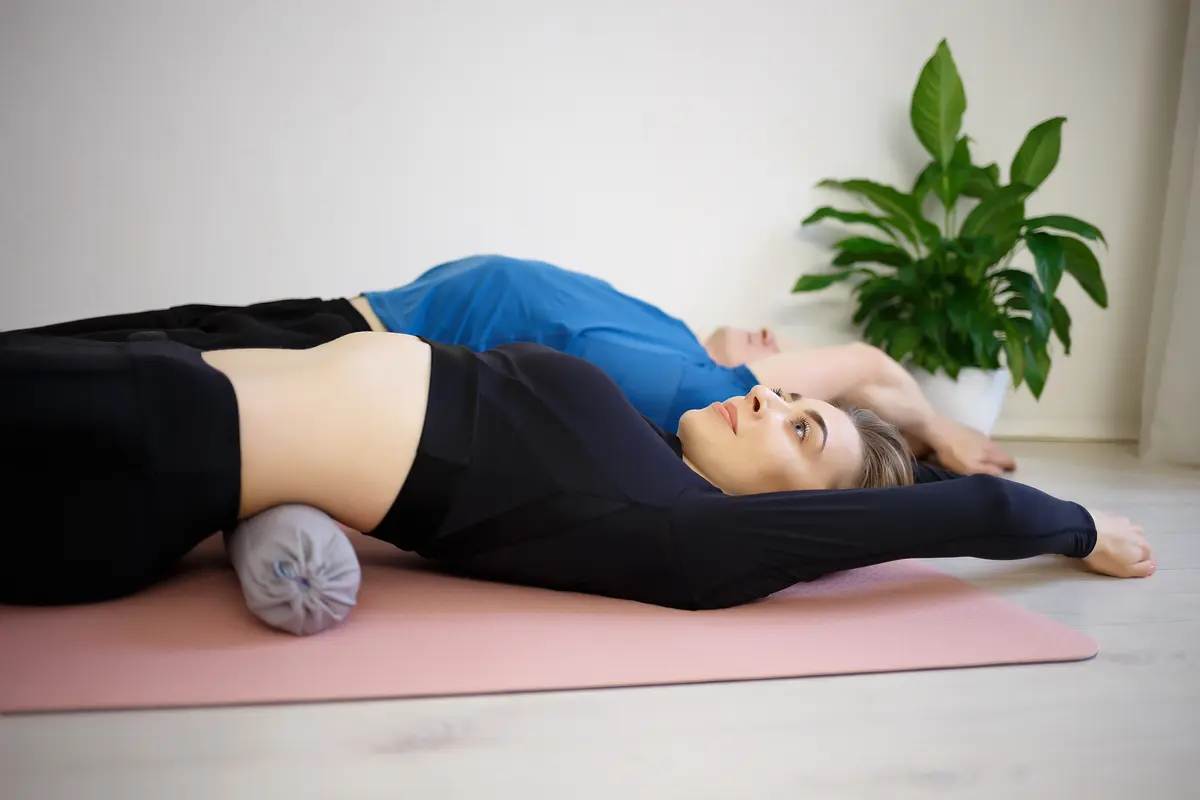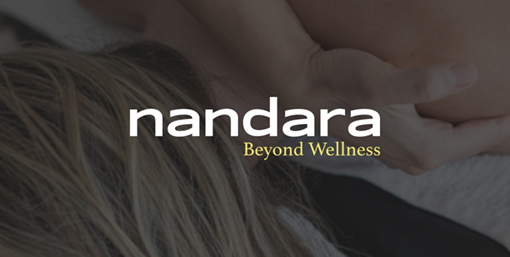Blog
6 self-massage techniques to recommend to your clients

Winter is finally over, but it left its mark!
Even today, muscles tense up, joints stiffen and fatigue sets in more easily.
Do your guests complain about their daily tensions? Can’t seem to relax fully, despite all your efforts and regular massages?
Maybe it’s time to teach them how to take care of themselves with self-massage techniques, what do you think?
If you’d like to give your massages a boost but don’t know how, you’ve come to the right place: Nandara presents 6 self-massage techniques to combat fatigue!
The benefits of self-massage: why get into the habit?
During the winter months, the body reacts differently to the cold. Muscles tend to contract more, especially in the back, shoulders and neck.
What’s more, the reduction in natural light can affect mood and increase stress.
Self-massage is a natural solution to combat these effects. And who better to teach customers how to self-massage than a well-being masseur?
If your clients are interested, you can explain the effects of massage on the muscles and the body in general.
Regular massages stimulate blood circulation, helping to warm the body and relax muscles. They also release endorphins, the famous happy hormones, and promote better sleep.
In practical terms, for your customers, learning how to massage gives them real autonomy in their well-being, and they’ll think of you every time they perform these simple, effective gestures!
So as well as taking care of your clients, even when you’re not giving massages, it’s an opportunity to build their loyalty and make them want to come back and see you again!
Self-massage techniques: it’s all up to you!
Each client has unique needs. Some suffer from lower back pain, others from tension in the shoulders or a feeling of heaviness in the legs.
To get it right, Nandara recommends that you offer them self-massage techniques adapted to their personal problems.
Above all, remind them that these gestures, while effective, are not a substitute for a session with a qualified professional, but a complement.
Here are 6 techniques you can use for self-massage at home!
Technique 1: Warm your hands for a boost of energy
Before any self-massage, remind your recipients of the importance of warming their hands. It’s a detail we rarely think about, but it can make all the difference!
Advise those being massaged to rub their palms vigorously until they feel a warmth emerge.
That way, when they apply their hands to their body to use the self-massage technique you’ve taught them, the heat will amplify each of their movements. And when it comes to feeling good, it couldn’t be nicer!
Nandara’s tip:
For even greater effectiveness, advise them to massage with ginger vegetable oil. This is a naturally warming oil, which will reach a very pleasant temperature on contact with the skin.
Technique 2: Relieve tension in the neck and shoulders
There’s no mystery about it: when it’s cold, we tense up. And when we tense up, the first to suffer are our neck and shoulders.
For those being massaged who find this area particularly painful, suggest a very simple self-massage technique: place your hands on either side of the back of the neck and apply circular pressure with your fingertips. Concentrate on areas of tension.
For the shoulders, ask them to gently grasp their trapezius between their thumb and other fingers, then apply regular pressure moving up towards their neck.
These gestures should be performed while breathing deeply, to synchronise the movement with a general calming of the body.
Technique 3: Decongest heavy legs
As winter draws to a close, the feeling of heavy legs can unfortunately intensify, due to blood circulation being compromised by the cooler temperatures.
If your guests suffer from heavy legs, start by suggesting that they elevate their legs for a few minutes to encourage venous return.
Then tell them to use their 2 hands to apply upward pressure, from the ankles to the knees, alternating slow and firmer movements.
For optimum effectiveness, they can use a cream or oil enriched with peppermint or cypress, which will provide a sensation of freshness and lightness. Note that these massages can be performed after a day on your feet or after a long walk.
So preferably in the evening, for welcome relief!
Technique 4: Foot massage for a moment of pure well-being
How can you talk about self-massage techniques without mentioning the feet?
As you may already know if you are trained in foot reflexology, a foot massage can have an effect on the whole body.
And feet, which are often locked in shoes during the winter, are the first to suffer.
Encourage your customers to massage the soles of their feet with their thumbs, drawing circles from the heel to the base of the toes. This stimulates the reflex zones and releases accumulated tension.
For an even deeper massage, a massage ball or simple tennis ball can be used. By gently rolling their foot over the ball, they will discover an immediate sense of relaxation, ideal after a tiring day.
Nandara’s tip:
As the feet are a particularly dry area, you can recommend that your subjects invest in a butter specifically designed for foot reflexology. That way, as well as relaxing, they’ll be moisturising their feet with care!
Technique 5: Soothe the face and promote relaxation
The cold can make the skin on your face more sensitive and create subtle muscle tension, particularly in the jaw area.
A facial self-massage using a gentle oil such as sweet almond or jojoba oil will bring immediate well-being.
Explain to your subjects how to make circular movements with their fingertips on the forehead, temples and cheeks.
For the jawline, simply press gently with your thumbs under the cheekbones and move up towards the ears.
Not only do these gestures promote relaxation, they also help improve lymphatic circulation.
Technique 6: Releasing tension in the lower back
Finally, whatever the season, massage-goers can suffer from tension in their lower backs. And with good reason: when we say our backs are full, it’s not by chance!
Guide your clients by asking them to lie on their backs with their knees bent. By placing their hands on either side of the lumbar region, they can make circular movements or apply slow, deep pressure.
For the more adventurous, a massage ball placed under the lower back can intensify the benefits, relieving muscle knots. Encourage them to always adjust the intensity to their comfort level.
In any case, self-massage of the lower back is fairly technical: reserve these tips for the more flexible massaged!
Give self-massage techniques pride of place in your spa!
In these spring months, every gesture counts to reconnect with yourself and ease the tension accumulated over the winter. As not everyone who receives a massage can come to a spa or institute every week, don’t hesitate to teach them these 6 self-massage techniques!
This will relieve their tension, without replacing the quality of your massages.
As a massage professional, you’re offering them much more than a temporary solution: you’re passing on a lasting practice to improve their quality of life.
And that’s the magic of massage, whatever the season.
At Nandara, we’re dedicated to supporting you in your quest for well-being. Keep up to date by exploring our blog and subscribing to our newsletter!
